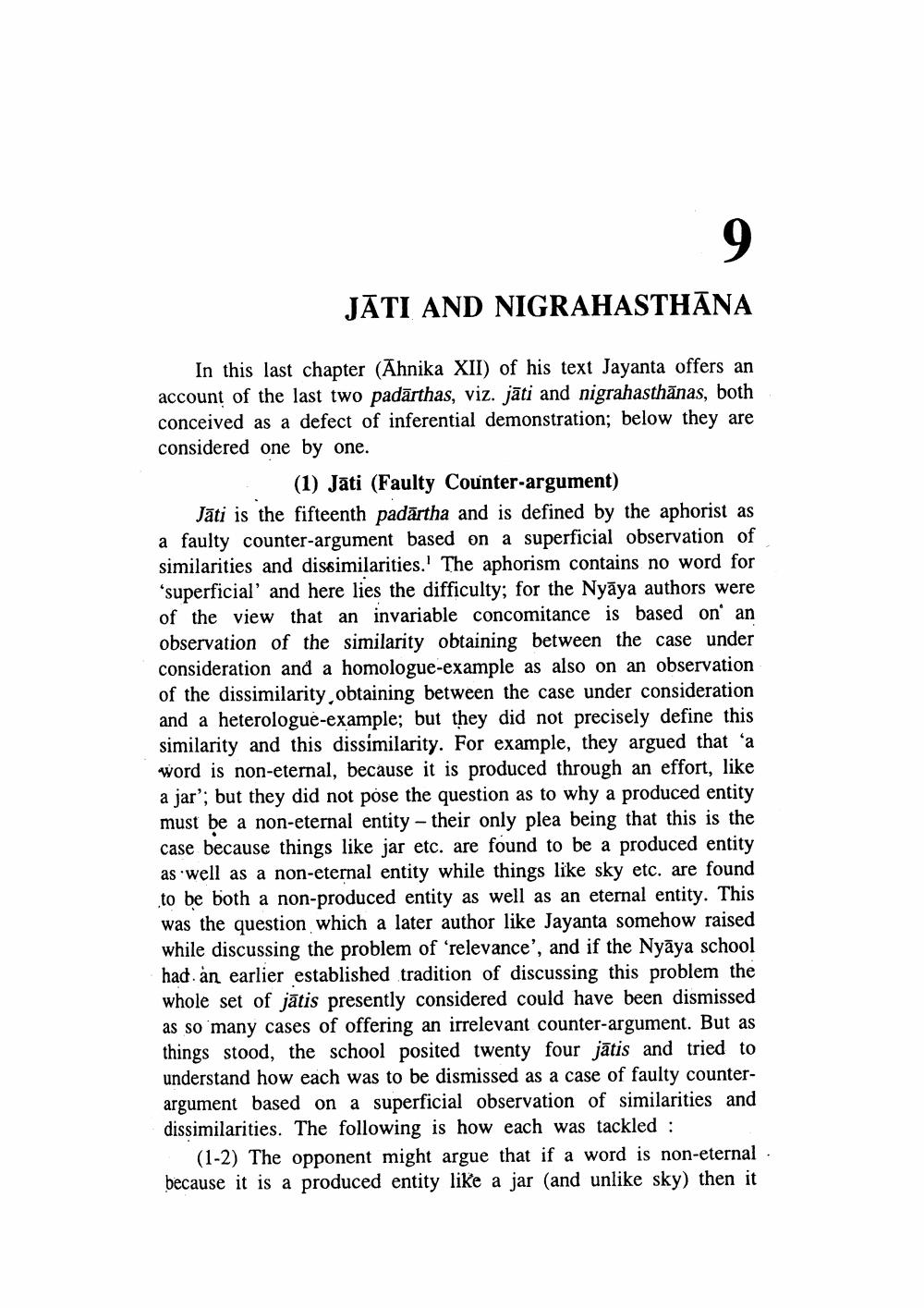________________
JĀTI AND NIGRAHASTHĀNA
In this last chapter (Ahnika XII) of his text Jayanta offers an account of the last two padārthas, viz. jāti and nigrahasthānas, both conceived as a defect of inferential demonstration; below they are considered one by one.
(1) Jāti (Faulty Counter-argument) Jāti is the fifteenth padārtha and is defined by the aphorist as a faulty counter-argument based on a superficial observation of similarities and dissimilarities. The aphorism contains no word for ‘superficial' and here lies the difficulty; for the Nyāya authors were of the view that an invariable concomitance is based on an observation of the similarity obtaining between the case under consideration and a homologue-example as also on an observation of the dissimilarity obtaining between the case under consideration and a heterologue-example; but they did not precisely define this similarity and this dissimilarity. For example, they argued that a word is non-eternal, because it is produced through an effort, like a jar'; but they did not pose the question as to why a produced entity must be a non-eternal entity - their only plea being that this is the case because things like jar etc. are found to be a produced entity as well as a non-eternal entity while things like sky etc. are found to be both a non-produced entity as well as an eternal entity. This was the question which a later author like Jayanta somehow raised while discussing the problem of 'relevance', and if the Nyāya school had an earlier established tradition of discussing this problem the whole set of jātis presently considered could have been dismissed as so many cases of offering an irrelevant counter-argument. But as things stood, the school posited twenty four jātis and tried to understand how each was to be dismissed as a case of faulty counterargument based on a superficial observation of similarities and dissimilarities. The following is how each was tackled :
(1-2) The opponent might argue that if a word is non-eternal because it is a produced entity like a jar (and unlike sky) then it




